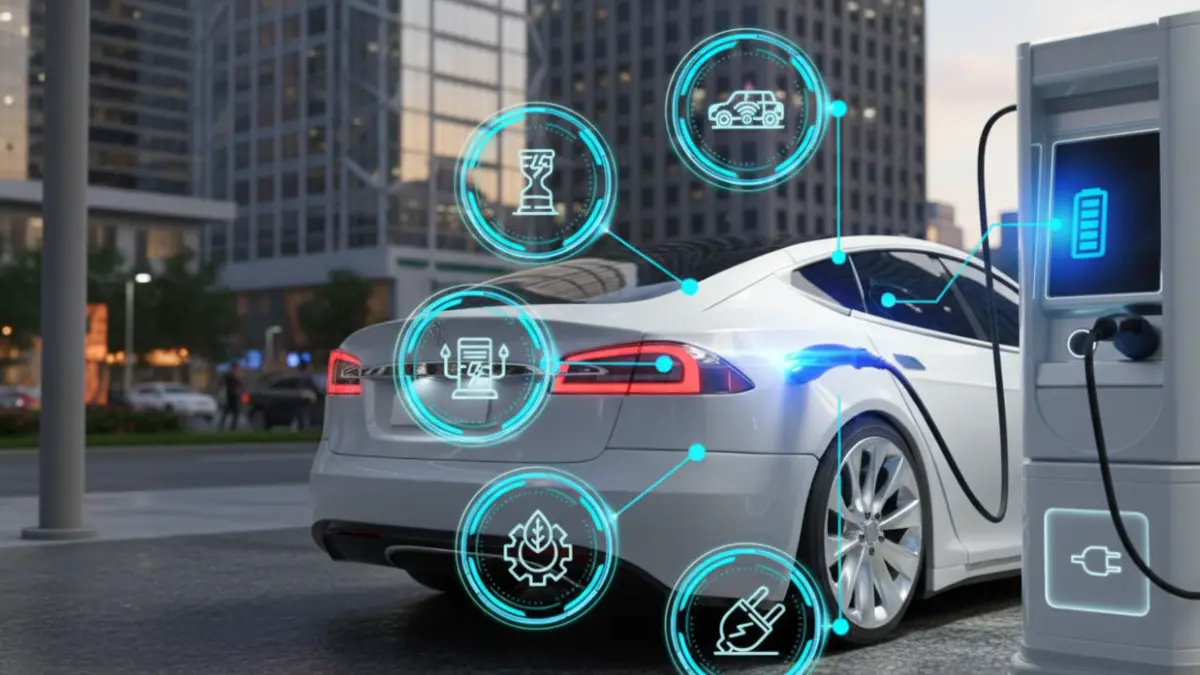Why EVs Lose Value Faster: Inside the Shocking Depreciation Crisis

Electric Cars Are Losing Value Faster Than Ever
The old saying goes, "A car loses value as soon as you drive it off the lot." For electric vehicles (EVs), that's proving painfully true, and then some. A new 2025 iSeeCars study reveals that EVs depreciate an average of 59% after five years, compared with 46% across the entire auto industry. Some models are losing over 70% of their original value, a trend that analysts warn could threaten mainstream EV adoption.
While EVs boast lower operating costs, minimal maintenance, and zero fuel expenses, owners are discovering that resale prices often deliver a rude shock. Analysts worry that poor resale values could discourage potential buyers, especially those already hesitant about EV range and charging infrastructure.
The Worst Depreciating EVs: Shocking Declines
According to iSeeCars, nearly a quarter of the worst depreciating vehicles in 2025 are electric. Leading the pack is the now-discontinued Jaguar I-Pace, which has lost a staggering 72% of its value in five years. Tesla's Model S, Model X, and Model Y have all dropped at least 60%, roughly matching the Porsche Taycan's decline.
Even budget-friendly models haven't escaped the trend: the Nissan Leaf, one of the most affordable EVs on the market, ranks among the biggest losers.
In stark contrast, gas-powered models like the Porsche 911 and Boxster retain value exceptionally well, despite their high sticker prices. The difference underscores a growing divide, traditional combustion-engine cars are holding steady, while electric models are plummeting in resale worth.
Why Electric Cars Depreciate So Quickly
1. Incentives and Discounts
Generous incentives, such as the now-expired $7,500 U.S. federal EV tax credit (ended September 30, 2025), have been a double-edged sword. While these rebates boosted sales, they also artificially inflated depreciation rates, since buyers factor in discounts when estimating resale value. EV incentives overall have been twice as high as those for gas vehicles.
2. Rapid Technological Advancements
EV technology is evolving at breakneck speed. Over the past decade, maximum driving range has nearly doubled, while median range has tripled. Meanwhile, the industry is shifting toward 800-volt architectures, cutting charging times nearly in half compared to older 400-volt systems.
The downside? Even a 2–3-year-old EV can feel outdated, similar to a smartphone that's lost its cutting-edge appeal.
3. Luxury EVs and Market Positioning
Most EVs remain premium or luxury products, carrying price tags well above the market average. The typical EV costs $9,000 more than a comparable gas or hybrid vehicle. And like most luxury cars, high-end EVs tend to depreciate faster, a blow softened only for buyers who "have money to burn."
Market Shifts: The Leasing Surge and Used EV Explosion
The U.S. EV leasing market has exploded, from 17% of new EVs in early 2023 to a staggering 71% by September 2025. These leases will soon flood the used market, with analysts expecting nearly one million used EVs hitting dealerships annually by 2028.
That influx could help stabilize used EV prices, as increased supply meets growing demand. However, the expiration of both new and used federal EV credits could temper demand in the short term.
J.D. Power analysts predict that EV demand could fall by up to half, and leasing may drop sharply since it was often used to qualify for tax credits on otherwise ineligible vehicles.
Consumer Concerns Still Loom Large
Despite improvements in battery durability and charging infrastructure, many drivers remain hesitant. A June 2025 survey found that over half of consumers still worry about range limitations, charging station availability, and the fear of being stranded without power.
EVs also tend to be driven less frequently than hybrids or gas vehicles, amplifying the perception that they're less practical. For cost-conscious buyers, that translates to "I should pay less for less flexibility."
Holding Value: The Smart Ownership Strategy
Experts suggest one simple strategy to offset EV depreciation: buy and hold. Cars of all types hit the bottom of their depreciation curve after about eight years. Owners who keep their EVs long-term can minimize losses and nearly match the resale stability of traditional cars.
In short, don't flip your EV. Lease it, or better yet, keep it.
The Road Ahead
While today's resale numbers look grim, the landscape is evolving fast. As battery tech improves, EV prices drop, and charging networks expand, depreciation rates may begin to normalize.
But for now, the data paints a clear picture: EVs may save money at the plug, but not at resale.